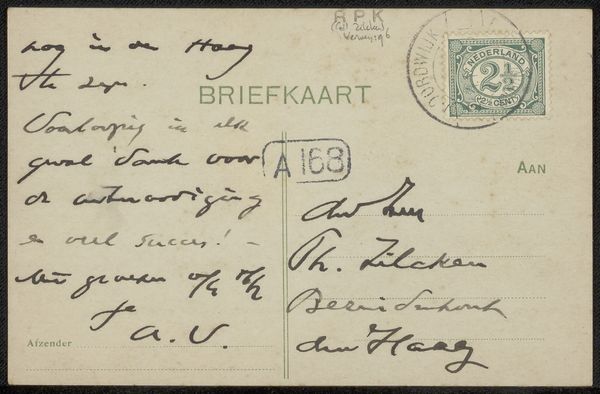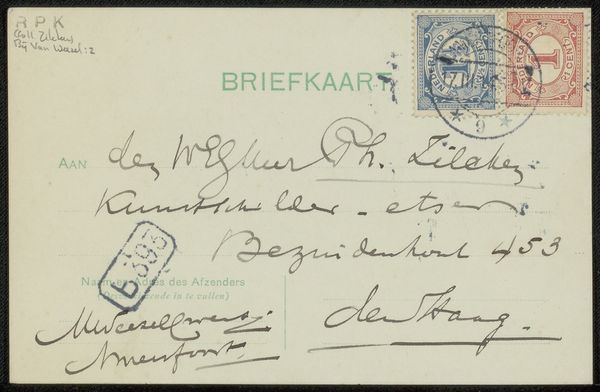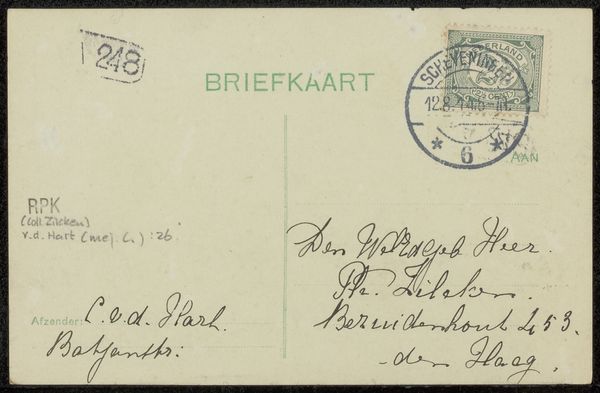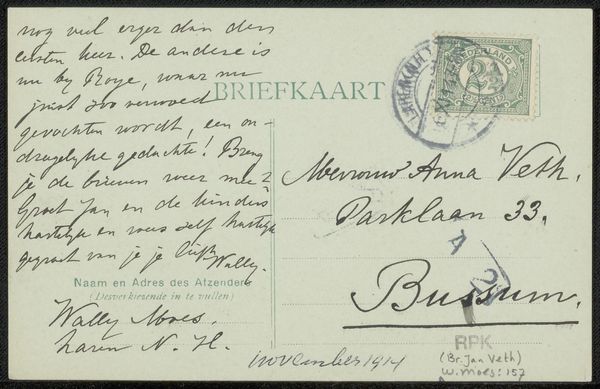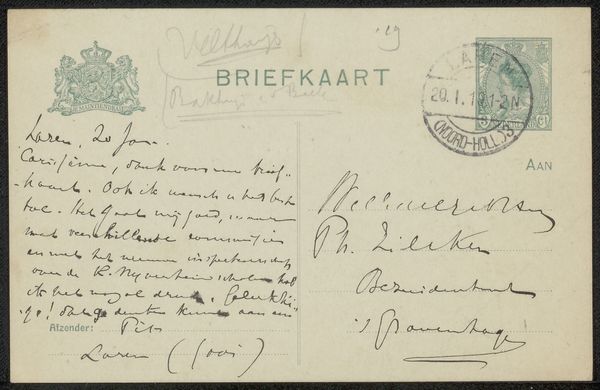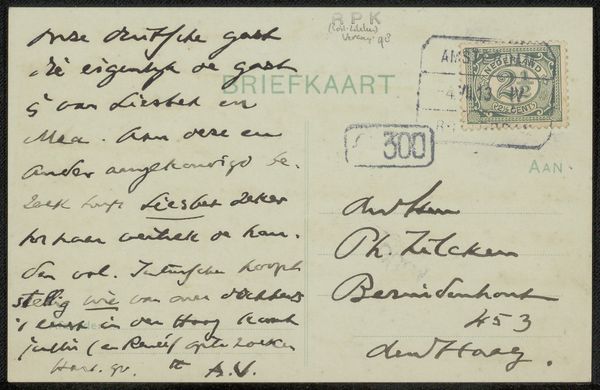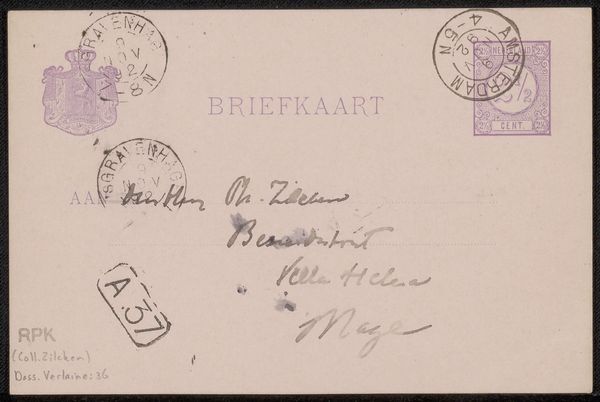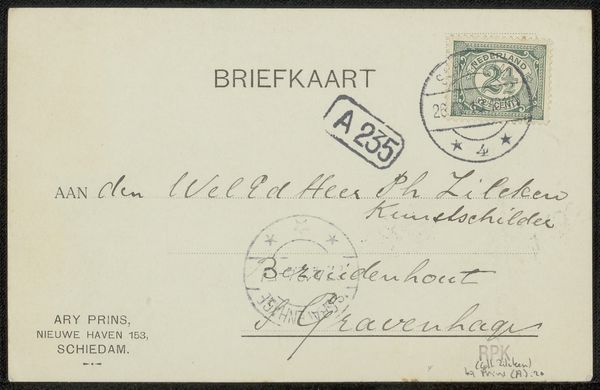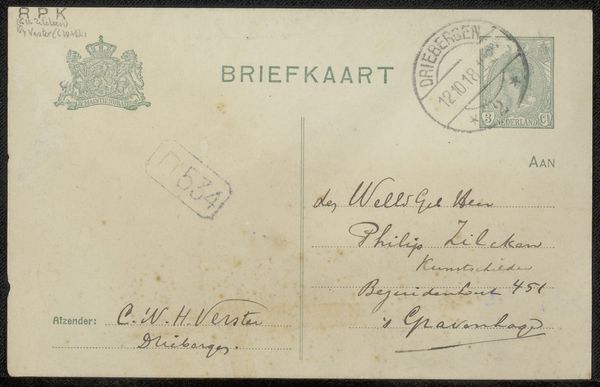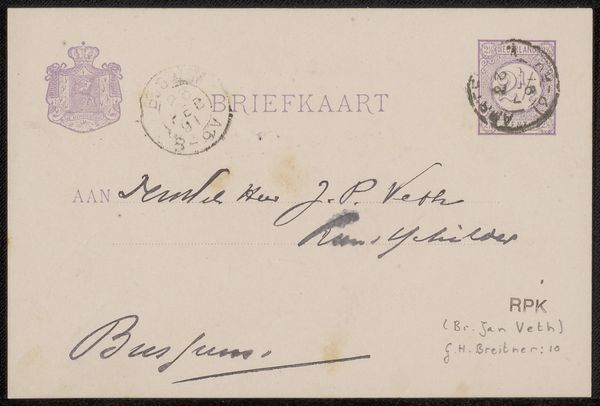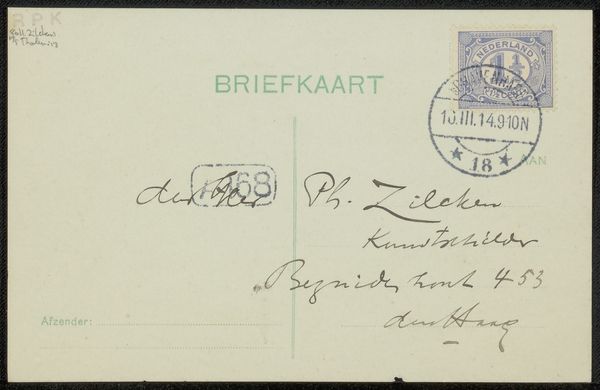
drawing, ink
#
portrait
#
drawing
#
hand-lettering
#
hand drawn type
#
hand lettering
#
personal sketchbook
#
ink
#
hand-drawn typeface
#
ink drawing experimentation
#
pen-ink sketch
#
pen work
#
sketchbook drawing
#
sketchbook art
#
calligraphy
Copyright: Rijks Museum: Open Domain
Editor: This is "Briefkaart aan Philip Zilcken" or "Postcard to Philip Zilcken", an ink drawing made before 1926 by Albert Verwey. The card seems like a quick correspondence. I wonder, what else can we gather from this seemingly simple piece? Curator: Seeing this, I’m drawn to the function of the "briefkaart" itself within the social fabric of the time. Consider how these postcards functioned as a primary form of written communication before widespread telephone use. How did these easily circulated, publicly viewable messages shape relationships and social interactions? Editor: That’s interesting! I never considered how public these messages were. Curator: Exactly. Think about the politics of this exchange: Who was Albert Verwey? Who was Philip Zilcken? What were their positions in society? The accessibility of the postcard also speaks volumes. Did the quickness with which people were communicating diminish its weight, its artistry, or was its art still very important to make these accessible? Editor: I can see how looking at this artwork in the context of public communication changes things. Knowing about the political positions of the two people would likely bring a lot to this piece. Curator: It moves the piece beyond a personal sentiment to potentially public intellectual life. Considering the postal stamp and postal markings: What stories do these infrastructural elements tell us about state control, communication networks, and even national identity at the time? Editor: I see it now. It’s not just a note; it's a little window into that time period. Curator: Precisely. And the choice of ink and handwritten calligraphy indicates something too. Was this kind of writing and this method going out of style? Does that factor into its artistic relevance or not? This small card becomes an intersection of personal and public histories. Editor: I will think of the importance of public life going forward. Thanks.
Comments
No comments
Be the first to comment and join the conversation on the ultimate creative platform.

